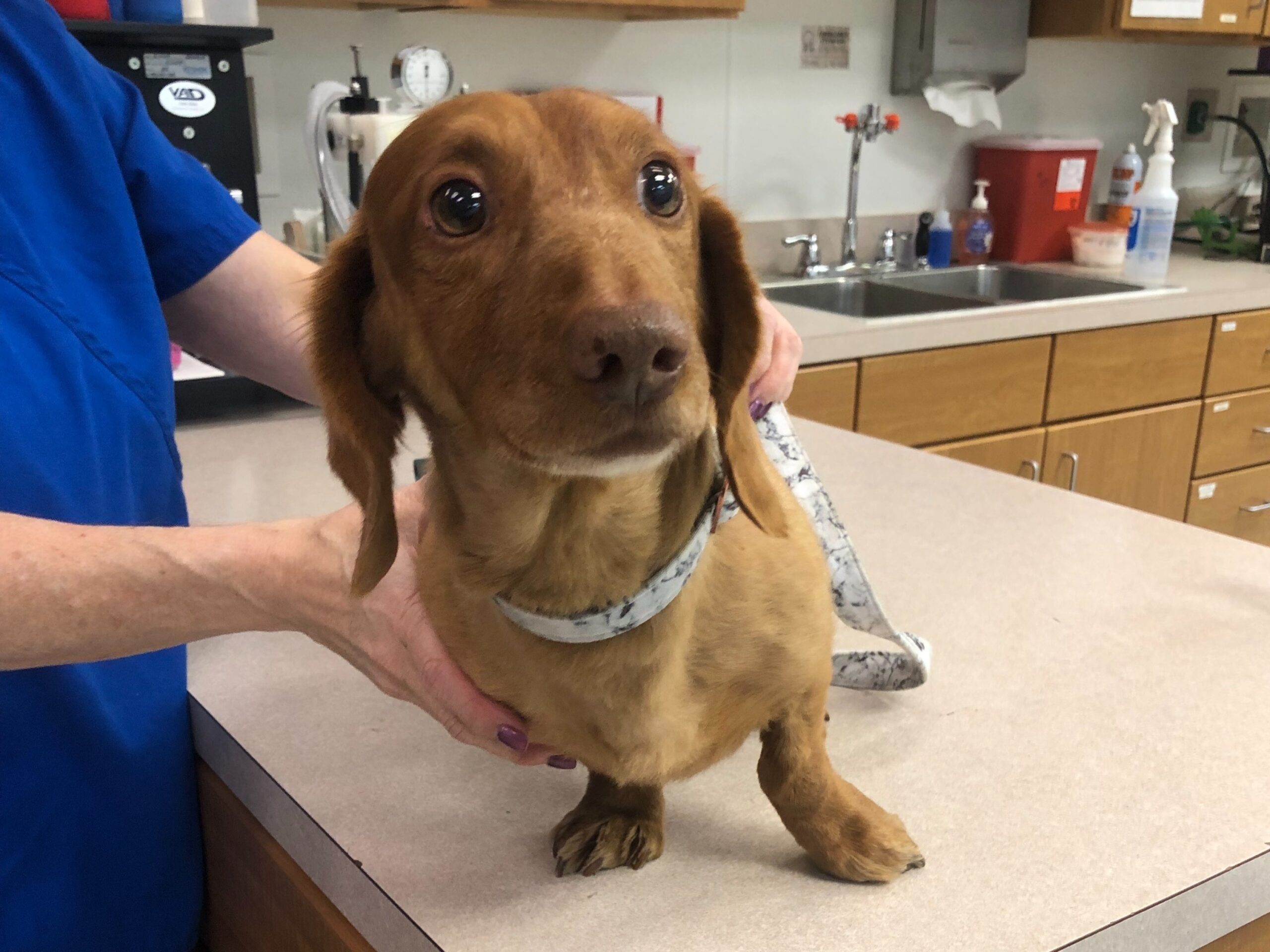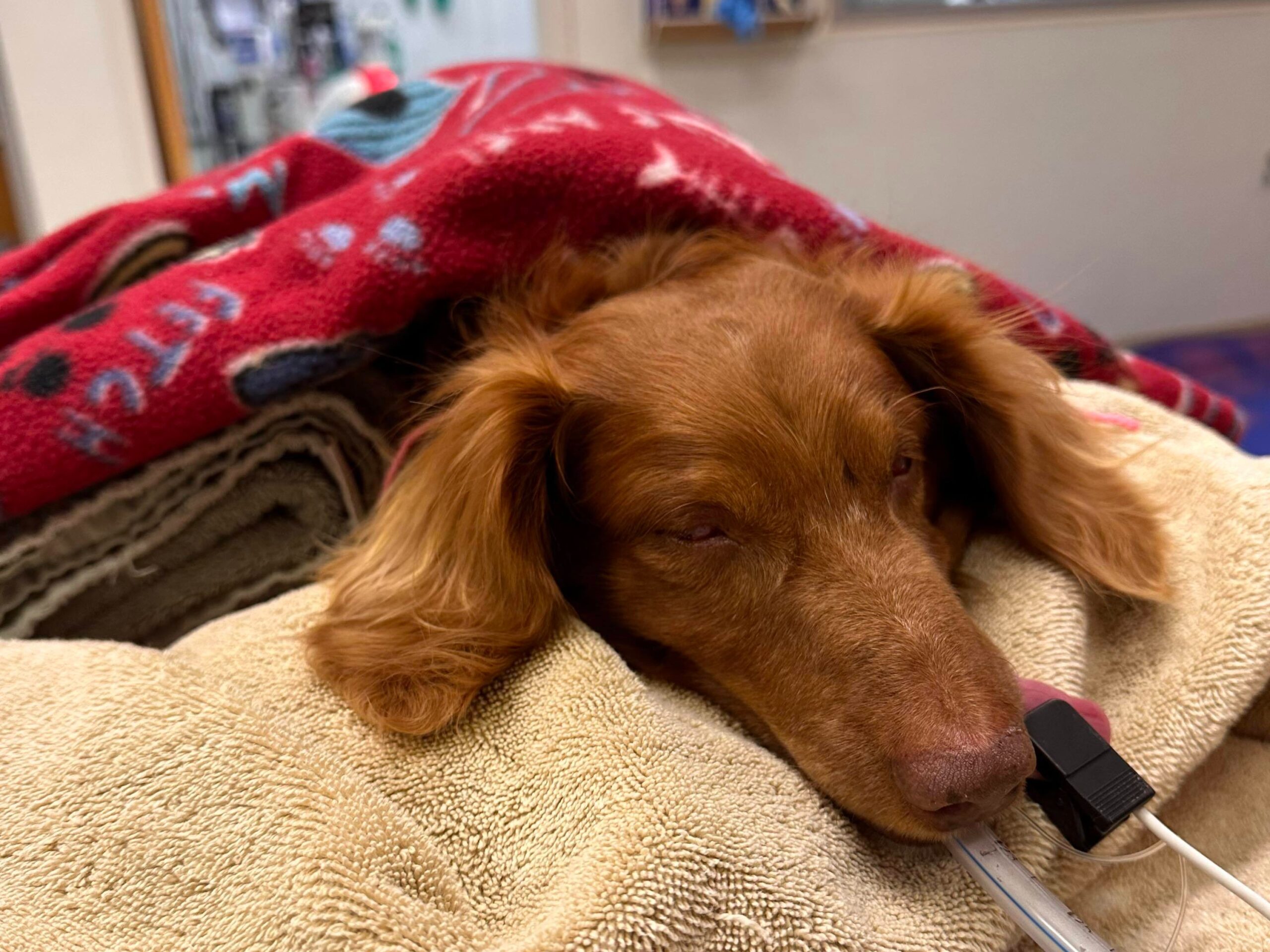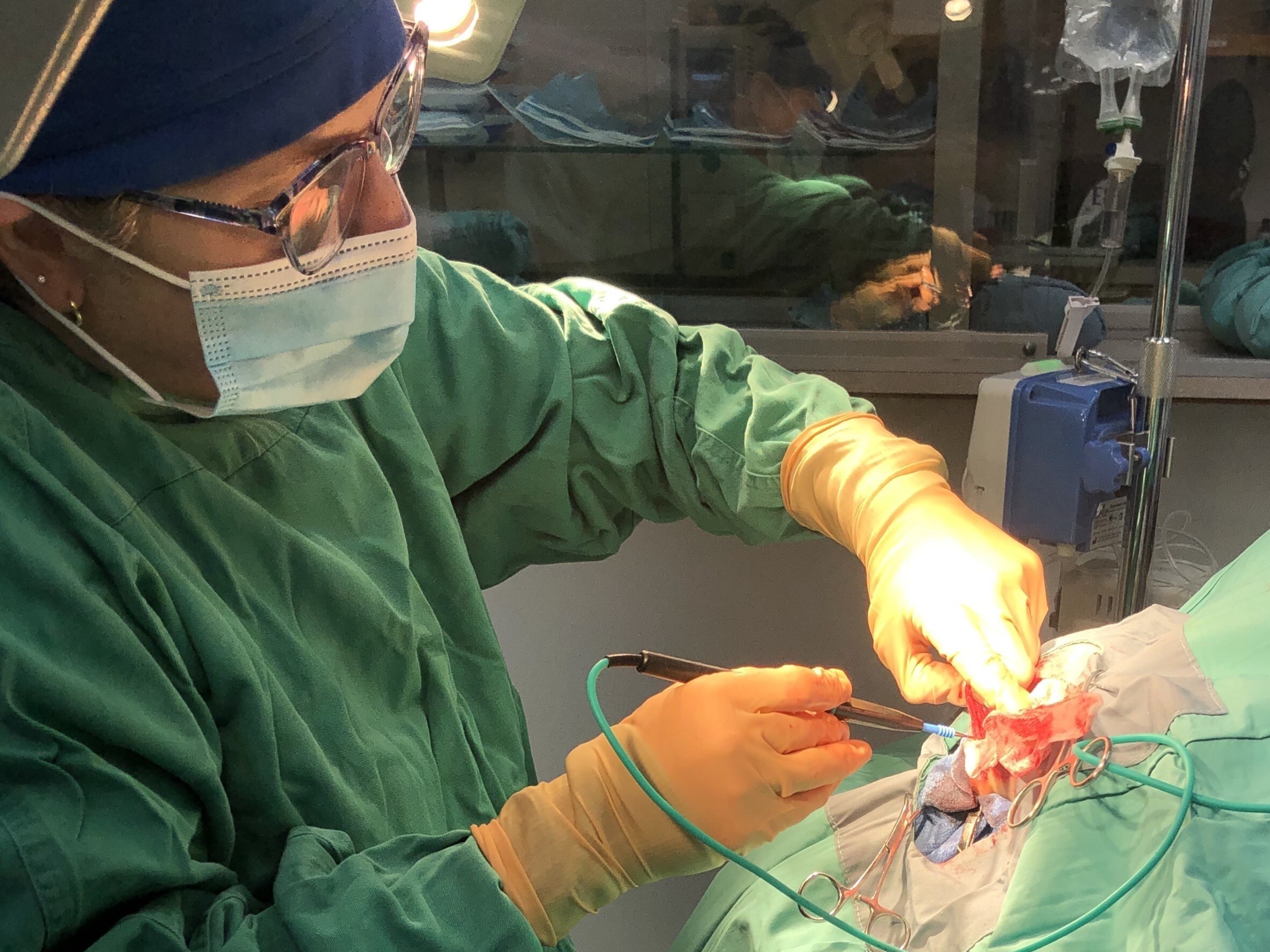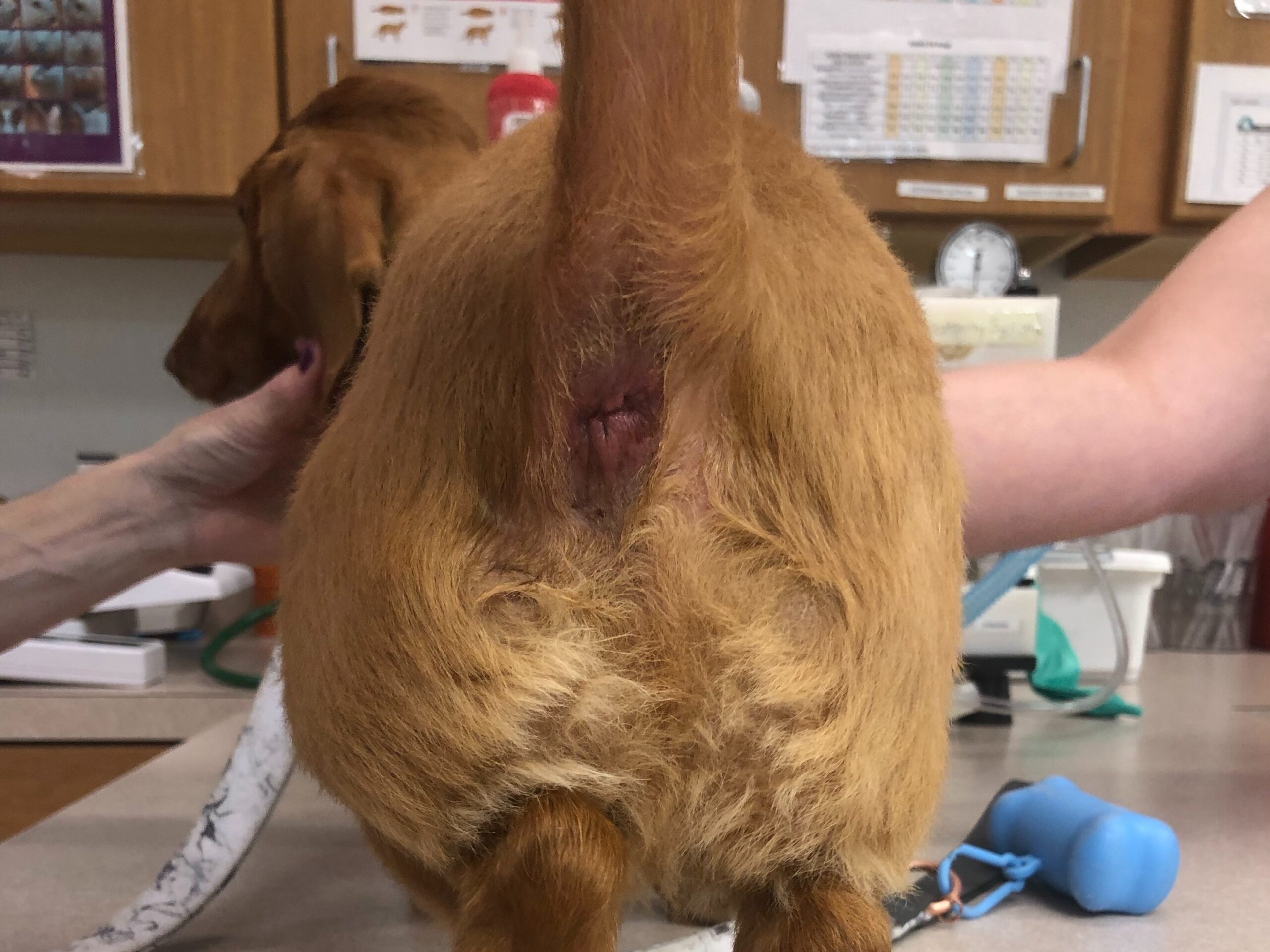

This past January, we reviewed symptoms and types of hernias in dogs. This month, we’re looking closer at a canine patient with a perineal hernia. Lorenzo was an otherwise healthy 7-year-old dachshund when he developed a perineal hernia. He was referred to Pets In Stitches to help him return to a normal life with a specialized surgery.
What Are Perineal Hernias?
Your dog’s pelvic floor muscles support internal organs such as the bladder and intestines. Over time, these muscles may weaken or tear due to injury. When that happens, organs or fat may move out of place and push through the muscles, which is called a perineal hernia. While perineal hernias are most common in middle-aged or elderly unneutered male dogs, they also can occur in cats and female dogs.
What Are the Signs of Perineal Hernias in Dogs?
Like many hernias, an abnormal bulging or swelling is the first sign something is wrong. With perineal hernias, you may notice a lump near your dog’s anus. This lump will normally be soft and will reduce in size if you apply gentle pressure to the bulge. In some cases — like Lorenzo’s — the hernia may push the rectum out of place.
Dogs with a perineal hernia may experience constipation or difficulty passing stools. If the bladder has moved out of position, urination may be painful or impossible, or the dog may become incontinent. If a loop of intestine is trapped in the hernia, it may cause constipation, severe pain, and loss of blood flow to the trapped section of intestine, which is an emergency
What Causes Perineal Hernias?
Perineal hernias can be caused by several factors. They usually develop slowly through a combination of hormone imbalances and a weakened or enlarged prostate. In rare cases, they stem from damage to the pelvic muscles.
If your dog struggles with chronic constipation, they may have a higher risk of developing a perineal hernia, as continuously straining to defecate can overwork these muscles. Because unneutered male dogs usually have a larger prostate and bigger hormone fluctuations, they are much more likely to develop a perineal hernia.
What Should You Know about Perineal Hernia Surgery in Dogs?
To address a perineal hernia, surgery is needed. Usually, the surgery is straightforward, especially if the hernia is found in its early stages. Surgery involves moving internal muscles to cover the area where fat or organs have herniated. In advanced cases, internal surgery may be required to place the affected organs back into their correct places and suture them to avoid future hernias.
Lorenzo’s Road to Recovery
When Lorenzo’s pet parents were referred to Pets In Stitches, fat tissue and his rectum had herniated and the hernia was beginning to accumulate feces. Luckily, Dr. Rastetter participated in the North American Veterinary Community Institute’s intensive Practical Techniques in Soft Tissue Surgery in 2023. Lorenzo was her first live patient with a perineal hernia. His pet parents trusted Dr. Rastetter to perform this surgery based on their vet’s recommendation.


After a routine surgery, Lorenzo was able to go home for some much-needed rest. Thanks to the attentive care of Lorenzo’s pet parents, the hernia was identified early and required minimal intervention. At his one-month check-up, the hernia repair was in place and he was back to his normal sweet self.

Lorenzo 1 month post op.
If you have an older male dog and notice pain or difficulty while defecating or any abnormal lumps near their rear end, a hernia may be the culprit. The quicker the hernia is addressed, the sooner your pet can return to normal activity. If you have any questions or concerns about perineal hernias, reach out to our team!
